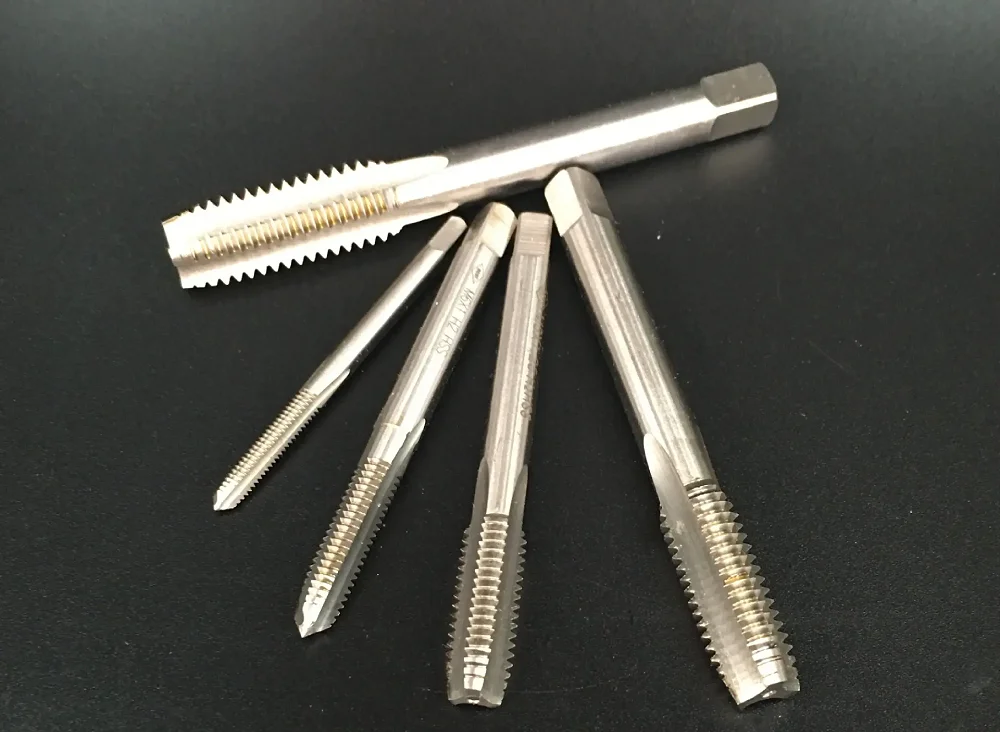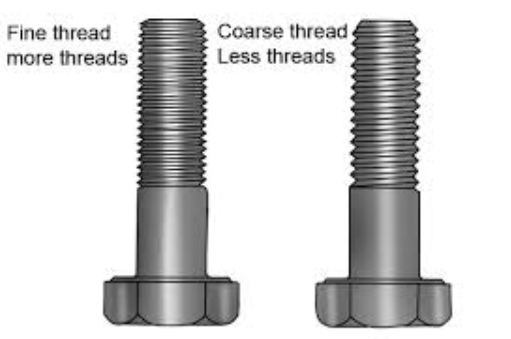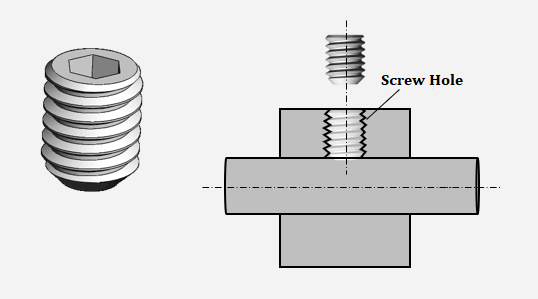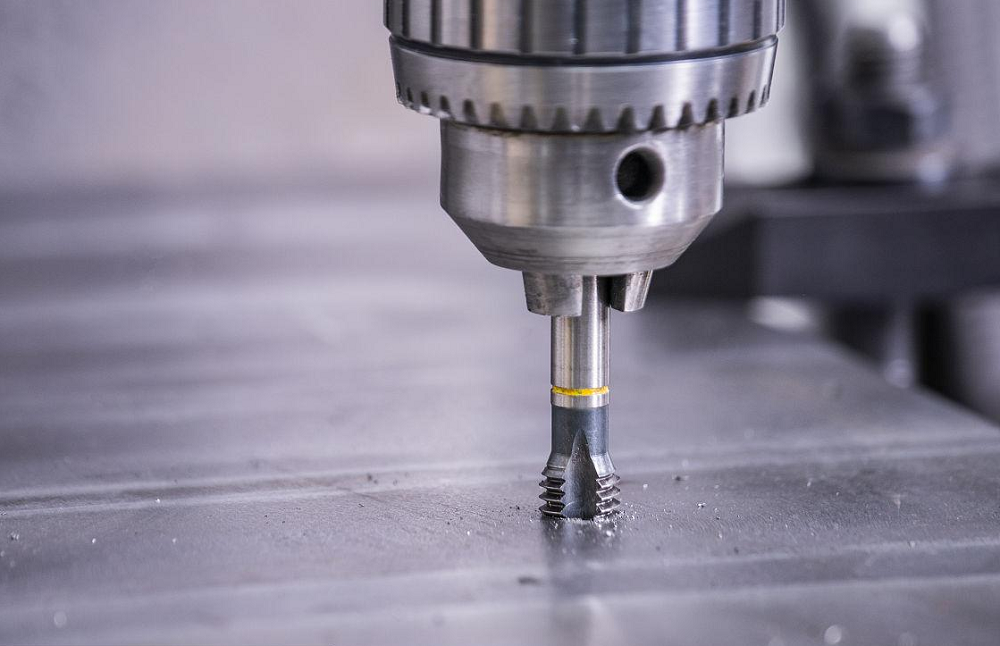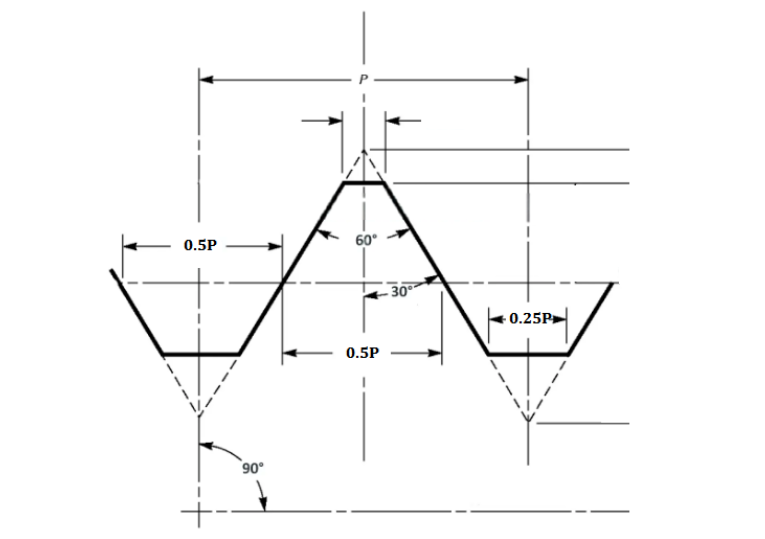Here we provide an accurate UNC and UNF Thread Chart PDF for your reference and download, so that you can quickly understand the dimensions (size in mm) and specifications of UNC/UNF threads!
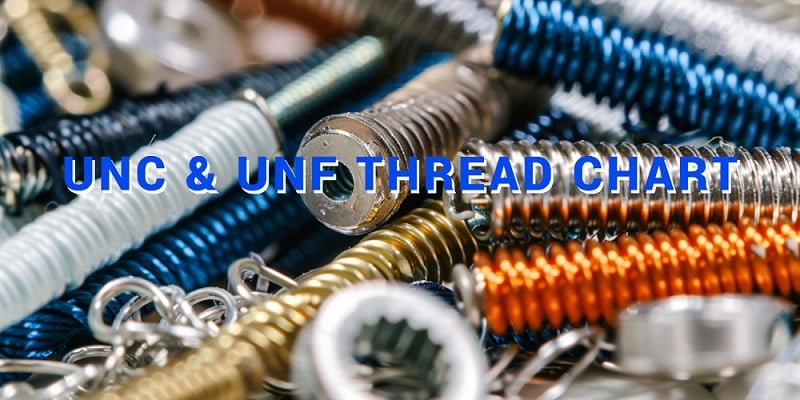
UNC and UNF Thread Chart (Dimensions & Diameter Table in MM)
The Unified Thread Standard (UTS) defines a standard thread form and series – along with allowances, tolerances, and designations – for screw threads commonly used in the United States and Canada. There are two main types of UTS threads: UNC (Unified National Coarse) and UNF (Unified National Fine).
What is UNC Thread?
UNC Thread Meaning – UNC Thread, full form Unified National Coarse Thread, It is a widely used thread standard in many fields such as mechanical manufacturing, automotive industry, aerospace, etc. The UNC thread standard is an American national standard that uses imperial units and is a coarse thread. The application scope of UNC thread standards is very wide, so understanding and mastering UNC thread standards is crucial for practitioners in related industries. It has specific size specifications and technical requirements, which play a crucial role in ensuring the connection strength, sealing, and interchangeability of components. The UNC thread standard adopts a circular arc profile with a profile angle of 60 degrees. The tooth profile of UNC thread standard is an isosceles triangle, with a tooth profile height of half the thread height. The tooth profile angle and shape of the UNC thread standard are significant differences from other thread standards, which also determine the uniqueness and applicability of the UNC thread standard.
UNC Thread Means Applications – The UNC thread standard is widely used in fields such as mechanical manufacturing, automotive manufacturing, aerospace, and more. In the field of mechanical manufacturing, UNC thread standards are commonly used for the manufacturing of connectors such as bolts, nuts, and screws; In the field of automobile manufacturing, UNC thread standards are commonly used for the manufacturing of components such as automobile engines and body structures; In the aerospace industry, UNC thread standards are commonly used in the manufacturing of aircraft, spacecraft, and other equipment. It can be said that the UNC thread standard has become an indispensable part of these fields.
What is UNF Thread?
UNF Thread Meaning – UNF Thread, full form Unified National Fine Thread, represents the unified fine thread standard of the American system. This is a thread standard jointly developed by countries such as the United States, the United Kingdom, and Canada, widely used in the field of mechanical connections, especially in situations that require high precision and a tight fit. Compared to coarse threads, fine threads have a finer pitch, providing a tighter connection and better sealing performance. Compared to UNC (Unified Coarse Thread), the pitch of the UNF thread is smaller, which allows it to perform well in situations where tighter connections and higher precision are required. A small pitch also means an increase in the contact area between threads, thereby improving the strength and reliability of the connection. Due to the smaller pitch, the self-locking performance of the UNF thread is relatively better. This allows it to maintain a good connection state even under vibration or force, and is not easily loosened. According to the UNF thread standard, there are strict regulations on thread profile, pitch, tolerance, etc. Manufacturers must strictly manufacture according to these standards to ensure the quality and accuracy of the threads.
UNF Thread Applications – Due to its high precision and excellent self-locking performance, UNF threads are widely used in various mechanical equipment and components that require tight connections. For example, in the fields of automobiles, aerospace, ships, and precision machinery equipment, NFT threads play an important role. In addition, in some industries with high requirements for connection strength and sealing, such as the petroleum and chemical industries, NFT threads have also been widely used.
When designing and manufacturing sew thread fittings or threaded fasteners, precision is crucial. Small differences in thread size can lead to huge differences in performance and applications. UNC and UNF Thread Chart in mm and inch, is crafted to serve as a definitive guide for those navigating the nuanced landscape of these two predominant thread standards in the United States and beyond.
UNC/UNF Thread Dimensions & How to Calculate
Here’s a basic outline of the specifications you might find on a UNC/UNF thread chart:
- Threads Per Inch (TPI): This is the number of thread peaks per inch length and is used to help identify the thread size.
- Major Diameter: This is the largest diameter of the screw thread and is the dimension measured on the crest of the external thread or the root of the internal thread.
- Tap Drill Size: This is the recommended diameter of the hole to be drilled before tapping (cutting) the threads. For UNC and UNF threads, the tap drill size can be calculated by subtracting the pitch from the major diameter.
- Pitch: This is the distance from one point on a screw thread to a corresponding point on the next thread, measured parallel to the axis. In the case of UNC/UNF, the pitch is the reciprocal of the threads per inch.
- Minor Diameter: This is the smallest diameter of the threaded portion of a screw; it is the diameter measured from the trough of the external thread or the crest of the internal thread.
Here’s a general way to calculate some of these values:
- Pitch (inches): 1 / TPI
- Tap Drill Size (inches): Major Diameter – Pitch
- Minor Diameter (approximation):
- For external threads (bolts): Major Diameter – (0.64952 × Pitch)
- For internal threads (nuts): Major Diameter – (0.64952 × Pitch)
A specific thread chart for UNC/UNF would provide exact numbers for these specifications for each thread size. For example, for a 1/4″-20 UNC thread, which has 20 threads per inch:
- Threads Per Inch (TPI): 20
- Major Diameter: 0.250 inches (1/4 inch)
- Tap Drill Size: Typically, this would be around 0.201 inches for a 1/4″-20 tap (calculated by subtracting the pitch from the major diameter, or using a tap drill chart).
- Pitch: 0.050 inches (calculated as 1 / TPI)
- Minor Diameter: This would vary depending on the class of fit, but it can be approximated using the formula provided above.
For precise applications, always refer to an official thread chart or machining handbook, as real-world applications need to account for various factors such as tolerances and thread fit classes.
What is UNC Thread Chart?
The UNC thread chart referenced on the Engineering Toolbox page is a comprehensive table listing the dimensions and specifications for Unified National Coarse (UNC) threads as defined by ANSI/ASME B1.1 standards. The table includes various diameters and threads per inch for the UNC series, providing essential information such as major diameters, tap drill sizes, and pitches in both inches and millimeters.
This chart is a valuable resource for engineers, machinists, and anyone involved in the design and assembly of mechanical components that utilize coarse threaded fasteners. The UNC thread system is one of the most commonly used thread types in the United States for bolts, screws, and other threaded fasteners.
UNC Thread Chart PDF
What is UNF Thread Chart?
The UNF thread chart referenced on the Engineering Toolbox page lists the specifications for Unified National Fine (UNF) threads, which follow the ANSI/ASME B1.1 standards. The UNF series consists of thread specifications with a finer pitch compared to the UNC series, which generally provides a better tension and strength relationship. It includes details such as major diameters, threads per inch, tap drill sizes, and pitch dimensions in both inches and millimeters.
The UNF thread system is widely used across the United States in applications requiring a higher tensile strength or a finer degree of adjustment. It’s particularly common in applications that are subject to higher levels of stress or that require a finer tensioning of the fastener.
UNF Thread Chart PDF
How to Read & Use the UNC/UNF Thread Chart?
Reading both UNC (Unified National Coarse) and UNF (Unified National Fine) thread charts requires understanding the standardized thread specifications for each system. Here’s a guide to interpreting the details in typical UNC and UNF thread charts:
Step-by-Step Guide to Reading UNC/UNF Thread Charts:
- 1. Major Diameter (in):
This column lists the nominal outside diameter of the screw or bolt. It is typically represented in inches. For numbered screw sizes, the number is followed by a hyphen and the threads per inch. For example, “#1 – 64” means a #1 size screw with 64 threads per inch. For fractional sizes, it is shown as a fraction followed by the thread count, e.g., “1/4″ – 20” means a quarter-inch diameter with 20 threads per inch.
- 2. Major Diameter (mm):
This is the metric equivalent of the major diameter listed in millimeters. It provides a conversion for those who use the metric system.
- 3. Threads per Inch (tpi):
This indicates the number of threads along a one-inch length of the fastener. A larger number signifies finer threads. For example, a UNF thread will have more threads per inch than a UNC thread of the same diameter.
- 4. Tap Drill Size (mm):
The recommended diameter of the drill bit to use when preparing a hole for tapping these threads. This size ensures that enough material is left for the tap to cut the intended thread.
- 5. Pitch (mm):
The distance from one thread crest to the next, measured in millimeters. It corresponds inversely to the thread count in ‘threads per inch’. A smaller pitch value indicates finer threads.
Example of Using a UNC/UNF Thread Chart:
Here’s an example using the chart to read the specifications for a 1/4″ – 20 UNC thread:
UNC (Coarse):
- Major Diameter (in): 1/4″
- Threads per Inch (tpi): 20
- Major Diameter (mm): 6.350 mm
- Tap Drill Size (mm): 5.35 mm
- Pitch (mm): 1.270 mm
Here’s an example using the chart to read the specifications for a 1/4″ – 28 UNF thread:
UNF (Fine):
- Major Diameter (in): 1/4″
- Threads per Inch (tpi): 28
- Major Diameter (mm): 6.350 mm
- Tap Drill Size (mm): 5.50 mm
- Pitch (mm): 0.907 mm
For the UNC version, the 1/4″ bolt will have 20 threads per inch, and you would use a tap drill that is approximately 5.35 mm in diameter. The pitch, or distance between threads, will be about 1.270 mm.
For the UNF version, the same 1/4″ bolt will have a finer thread with 28 threads per inch, requiring a slightly larger tap drill size of 5.50 mm, and the pitch between threads will be finer at 0.907 mm.
When reading these charts, ensure to use the correct row and column for the thread size and series (UNC or UNF) you are working with. The tap drill size indicated is usually the closest standard drill size that will accommodate the thread-forming tap, and it may not always be an exact conversion from the thread’s nominal diameter.


